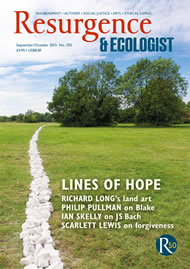Whales and dolphins are creatures that exist largely in our imaginations; glimpses as they unexpectedly breach the sea’s surface, or perhaps as they are viewed in captivity, are the most that many people will ever see. Few people get to experience their lives, movements and, indeed, cultures in any intimate way, and yet their history is interlinked with our own.
For those captivated by whales and dolphins, whether in reality or by an idea, Hal Whitehead and Luke Rendell’s impressive book brings their world vividly to life, with a blend of anecdote, scientific research and personal reflection.
The hypothesis of the book is simple: that there is suitable and substantial evidence to suggest that at least some species of cetacean have a culture, defined by the authors as “information or behavior – shared within a community – which is acquired from conspecifics through some form of social learning”.
Focusing on species that have a strong resonance with human beings through history and popular culture (orcas, bottlenose dolphins, sperm and humpback whales, and occasionally digressing to lesser-known species such as pilot whales) allows readers to get some grasp on the complex issues being discussed. These are the most accessible of the cetaceans, and therefore the most available for study.
Whilst this limits the broad conclusions that can be made – that all cetaceans possess culture – the evidence is convincing and appealing, littered with many case studies contemporary and historical, wild and captive. Chapters 4, 5 and 6 are truly fascinating, and it is rare that a scientific tome comes so close to narrative storytelling. Song, communication, social structure, learning, community, behaviour, interaction – with their own species and others, including humans – and even traits such as xenophobia (in the case of orcas) are addressed.
For example, some bottlenose dolphins of Shark Bay, Western Australia, have been nicknamed ‘spongers’, due to their habit of carrying sponges on their noses: it is speculated that this is to protect them from the spikes of bottom-dwelling fish, enabling them to forage. The transmission of this skill is passed from mothers to daughters, and these dolphins form a sub-community in the area: thus, culture.
The debate on animal culture is historically controversial: it is becoming accepted amongst behavioural ecologists and socio-biologists that for some animals – elephants, chimps, some birds, cetaceans – culture might have an important role in determining behaviour (along with genetics), but there is resistance from anthropologists and psychologists who maintain that humans are unique in possessing culture. Whitehead and Rendell attack this as being based on laboratory experiments, thus not real cultures. They concede that they in turn have been equally criticised for their use of anecdotal evidence. Clearly they have been embroiled in this debate for some time: their tone at times is amused, even wearied.
The authors are evidently captivated by whales and dolphins and care passionately about their conservation. They use their hypothesis to argue that cetaceans possess ‘personhood’, and therefore our responsibility to conserve them goes beyond conventional Nature conservation: they have something akin to rights. This will be an uncomfortable conclusion for some, with moral, economic, scientific and societal implications.
On the final page, Whitehead and Rendell advise that readers should at least read chapters 4, 5 and 6, and I agree. These chapters are in danger of being lost in theory; the first three chapters take perseverance to conquer, especially as at times cetaceans drop completely from the text, and the academic style sits at odds with the stimulating chapters that follow. That said, the call to action is admirable: “Get on a boat and see [whales and dolphins] at sea… Perhaps you will become entranced with what else lies out there.” Their infectious love of the ocean and of their subject can easily forgive any minor defect in style.







